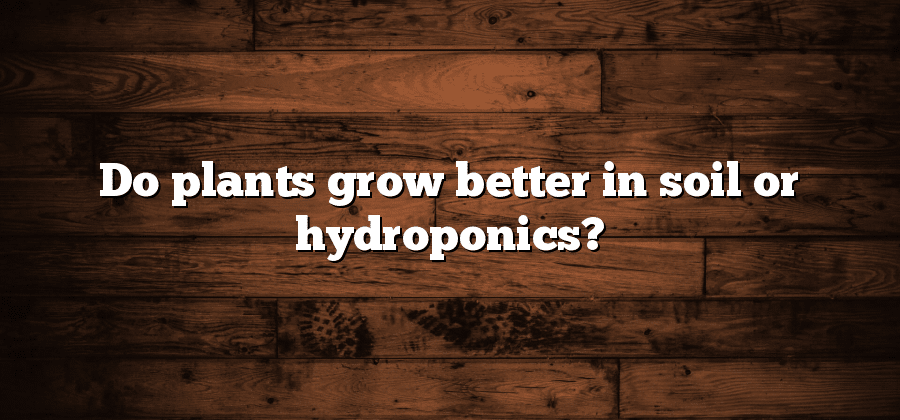Traditional Growing Methods
Traditional growing methods have been utilized by farmers for centuries to cultivate crops. These methods have been passed down from generation to generation, preserving the wisdom and knowledge of previous farming practices. One of the key aspects of traditional growing methods is the reliance on natural fertilizers such as manure or compost. These organic materials enrich the soil with essential nutrients, promoting healthy plant growth and improving overall soil fertility. Additionally, traditional methods often involve crop rotation, a practice where different crops are grown in specific sequences to disrupt pest cycles and maintain soil health. This ensures that the soil remains balanced and continues to provide optimal growing conditions for future crops.
In traditional growing methods, farmers also prioritize utilizing locally available resources, such as using heirloom seeds or selecting crop varieties that are well suited to the local climate and soil conditions. This approach allows farmers to take advantage of natural adaptations that certain plant varieties have developed over time. Traditional growing methods also often involve manual labor and close observation of plants, allowing farmers to closely monitor and address any issues that arise in a timely manner. Pest control is usually approached using natural methods, such as companion planting or introducing beneficial insects that prey on pests. These traditional methods of cultivation demonstrate the intricate relationship between farmers and their land, as they strive to work in harmony with nature to yield healthy and sustainable crops.
Challenges with Soil Cultivation
Effective soil cultivation is essential for successful crop production. However, farmers often face various challenges in this aspect of agriculture. One of the primary challenges is soil compaction, which occurs when the soil particles are pressed together, resulting in reduced pore spaces and limited water and air movement. Compacted soil makes it difficult for plant roots to penetrate and access nutrients, leading to stunted growth and lower yields. Moreover, it can hinder the percolation of water, leading to runoff and erosion.
Another common issue faced by farmers is soil erosion. Soil erosion is the removal of the top layer of soil by wind or water. This process can be detrimental to crop production as it causes the loss of valuable nutrients and organic matter. It also disrupts the soil structure, making it less capable of retaining water and supporting healthy root development. Erosion control measures such as terracing, contour plowing, and the use of cover crops can help mitigate this challenge. Nonetheless, soil cultivation practices must be carefully managed to minimize erosion risk and maintain the long-term productivity of the land.
Nutrient Availability in Soil
One of the most crucial factors for successful plant growth and development is nutrient availability in the soil. Nutrients such as nitrogen, phosphorus, and potassium play a vital role in providing the necessary fuel for plant metabolism and overall health. However, ensuring optimal nutrient availability in the soil can be a challenging task for many farmers and gardeners.
One challenge is the natural depletion of nutrients over time. Continuous crop cultivation and harvesting can lead to a decrease in nutrient levels, especially if proper soil management practices are not implemented. This depletion can result in nutrient deficiencies, which can limit plant growth and yield potential. Therefore, it is crucial to regularly test the soil and replenish nutrients accordingly to maintain an adequate level of nutrient availability.
Another challenge related to nutrient availability is the inefficient absorption of nutrients by plants. Even if the soil contains an ample amount of nutrients, various factors such as soil pH, excessive rainfall, or poor drainage can hinder nutrient uptake by plant roots. In such cases, fertilization techniques, such as foliar sprays or root drenches, can be employed to bypass these obstacles and ensure optimal nutrient availability for plants.
Stay tuned for the next section, which will discuss effective disease and pest control strategies in soil to support healthy plant growth and maximize crop yield.
Disease and Pest Control in Soil
Pests and diseases pose significant challenges to soil cultivation. These issues can greatly impact the health and productivity of plants, making disease and pest control in soil a critical aspect of agricultural practices.
One of the key strategies for managing diseases and pests in soil is through cultural practices. Farmers often employ crop rotation, which involves planting different crops in succession to disrupt the life cycles of pests and diseases. This practice helps to reduce the build-up of pathogens and pests in the soil. Additionally, maintaining proper sanitation measures, such as removing and disposing of infected plant material, can help prevent the spread of diseases in the soil. By implementing these cultural practices, farmers can minimize the risk of diseases and pests, ensuring the overall health and vitality of their crops.
Watering and Irrigation in Soil
Proper watering and irrigation techniques play a crucial role in the health and productivity of soil. The amount and frequency of watering can significantly impact the growth and development of plants, as well as the overall sustainability of the soil ecosystem. Adequate moisture is essential for the absorption of nutrients by plant roots and the activation of important biological processes within the soil.
One key aspect to consider when watering soil is the time of day. It is generally recommended to water early in the morning or late in the evening to minimize evaporation and ensure maximum water uptake by plants. This time frame allows water to penetrate deeper into the soil, reaching the root zone more effectively. Care should be taken to avoid overwatering, as excessive moisture can lead to waterlogging and the development of anaerobic conditions in the soil. On the other hand, underwatering can result in stunted growth and nutrient deficiencies. Finding the balance between too much and too little water is essential for maintaining optimal soil health and plant productivity.






